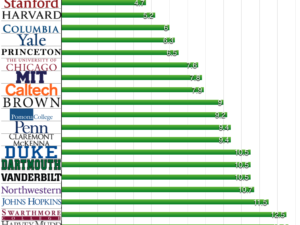Buying a home in the United States is a significant milestone, and for many immigrants, it represents the realization of the American Dream. However, navigating the complex world of mortgages and loans can be a challenge, especially for those unfamiliar with the process. One of the most accessible routes for immigrants to secure home financing is through FHA loans. These loans, backed by the Federal Housing Administration (FHA), provide a pathway for low to moderate-income individuals to purchase homes with favorable terms, making homeownership more attainable.
In this guide, we’ll explore the significance of FHA loans and mortgage insurance, along with the steps involved in applying for and securing a home loan as an immigrant in the United States.
What is an FHA Loan?
An FHA loan is a government-backed mortgage option designed to help individuals, including immigrants, purchase homes with less stringent qualifications than conventional loans. These loans are insured by the Federal Housing Administration, which reduces the risk for lenders, allowing them to offer loans to people with lower credit scores and smaller down payments.
Significance for Immigrants:
For immigrants in the U.S., securing a traditional mortgage can be difficult due to factors such as a lack of established credit history, foreign income, or limited work experience. FHA loans make homeownership possible by offering more flexible eligibility requirements, including lower down payments (as low as 3.5%), which is especially important for immigrants who might not have large savings.
Key Features of FHA Loans– Insurance In USA
1. Low Down Payment
One of the biggest advantages of FHA loans is the ability to purchase a home with a lower down payment. Typically, conventional loans require at least a 20% down payment, while FHA loans allow immigrants to qualify with just 3.5% down, making homeownership more affordable.
2. Easier Qualification Criteria
FHA loans have less strict eligibility requirements, including:
- Credit score: The minimum credit score requirement is 580 for the 3.5% down payment. Some lenders may offer loans to those with scores as low as 500, but with a higher down payment of 10%.
- Income and employment history: Immigrants can qualify for FHA loans if they have a valid work history and income that meets the lender’s requirements, even if they have limited credit history.
3. Government Backing
The FHA insurance protects the lender in case the borrower defaults on the loan, which reduces the risk for lenders and encourages them to offer more favorable terms, such as lower interest rates and smaller down payments.
Mortgage Insurance and Its Importance
One important aspect of FHA loans that immigrants need to understand is mortgage insurance. Unlike conventional loans, FHA loans require borrowers to pay for mortgage insurance to protect the lender in case of default. Mortgage insurance is required on all FHA loans, regardless of the down payment size, and typically consists of two components:
1. Upfront Mortgage Insurance Premium (UFMIP)
This is a one-time premium of 1.75% of the loan amount, which can be rolled into the loan amount itself. This premium is paid at the time of closing.
2. Annual Mortgage Insurance Premium (MIP)
The second type of mortgage insurance is paid annually and is typically divided into monthly payments. The amount you pay depends on factors such as the loan amount, the length of the loan, and the loan-to-value (LTV) ratio. While MIP is typically required for the life of the loan if you have a down payment of less than 10%, it may be eliminated after 11 years for loans with a down payment of 10% or more.
Steps to Secure an FHA Loan as an Immigrant
Step 1: Check Eligibility
To qualify for an FHA loan as an immigrant, you need to meet the following basic criteria:
- Legal residency status: You must be a legal resident of the U.S., which can include permanent residents (green card holders) or non-permanent residents (such as those with work visas).
- Valid social security number: You must have a valid Social Security number or Individual Taxpayer Identification Number (ITIN).
- Proof of income: You need to provide documentation of your income, which may include pay stubs, tax returns, or bank statements.
Step 2: Choose an FHA-Approved Lender
FHA loans are offered through FHA-approved lenders, including banks, credit unions, and other mortgage lenders. You’ll need to shop around for a lender who offers competitive rates and can walk you through the application process. You can check out for the 2025 Top FHA Lenders here
Step 3: Gather Necessary Documents
Prepare the necessary documents, including:
- Proof of income and employment
- Tax returns and pay stubs
- Bank statements
- Valid identification and legal residency documents
Step 4: Apply for the Loan
Once you’ve gathered your documentation, you can submit your application to the lender. The lender will assess your eligibility based on your financial profile, including your credit score, income, and debt-to-income ratio.
Step 5: Close the Loan
If approved, you’ll go through the closing process, which includes signing the final documents and paying closing costs (including the UFMIP). Once everything is finalized, you’ll officially become a homeowner in the U.S.
You can also read: Family Based U.S Visa for Immigrants with Flight Package, and Housing Assistance- Migrate to USA
Conclusion
FHA loans are a valuable tool for immigrants looking to purchase homes in the United States. With their low down payment options, flexible eligibility requirements, and the ability to finance mortgage insurance, these loans make homeownership more attainable. Understanding the role of mortgage insurance, the application process, and the benefits of working with an FHA-approved lender can help make the process smoother and more accessible. By following the steps outlined in this guide, immigrants can take advantage of FHA loans and begin their journey toward homeownership in the U.S.





